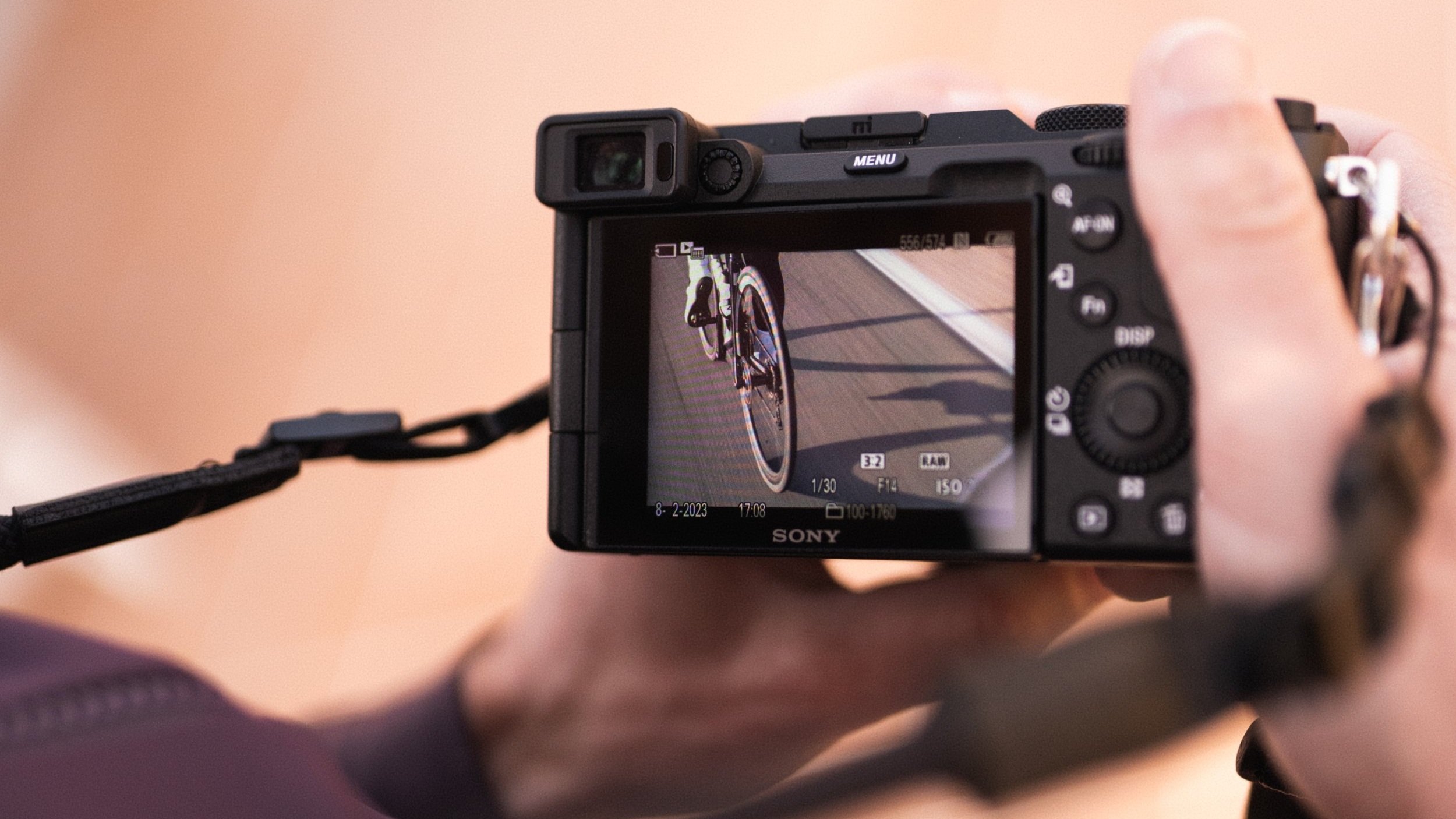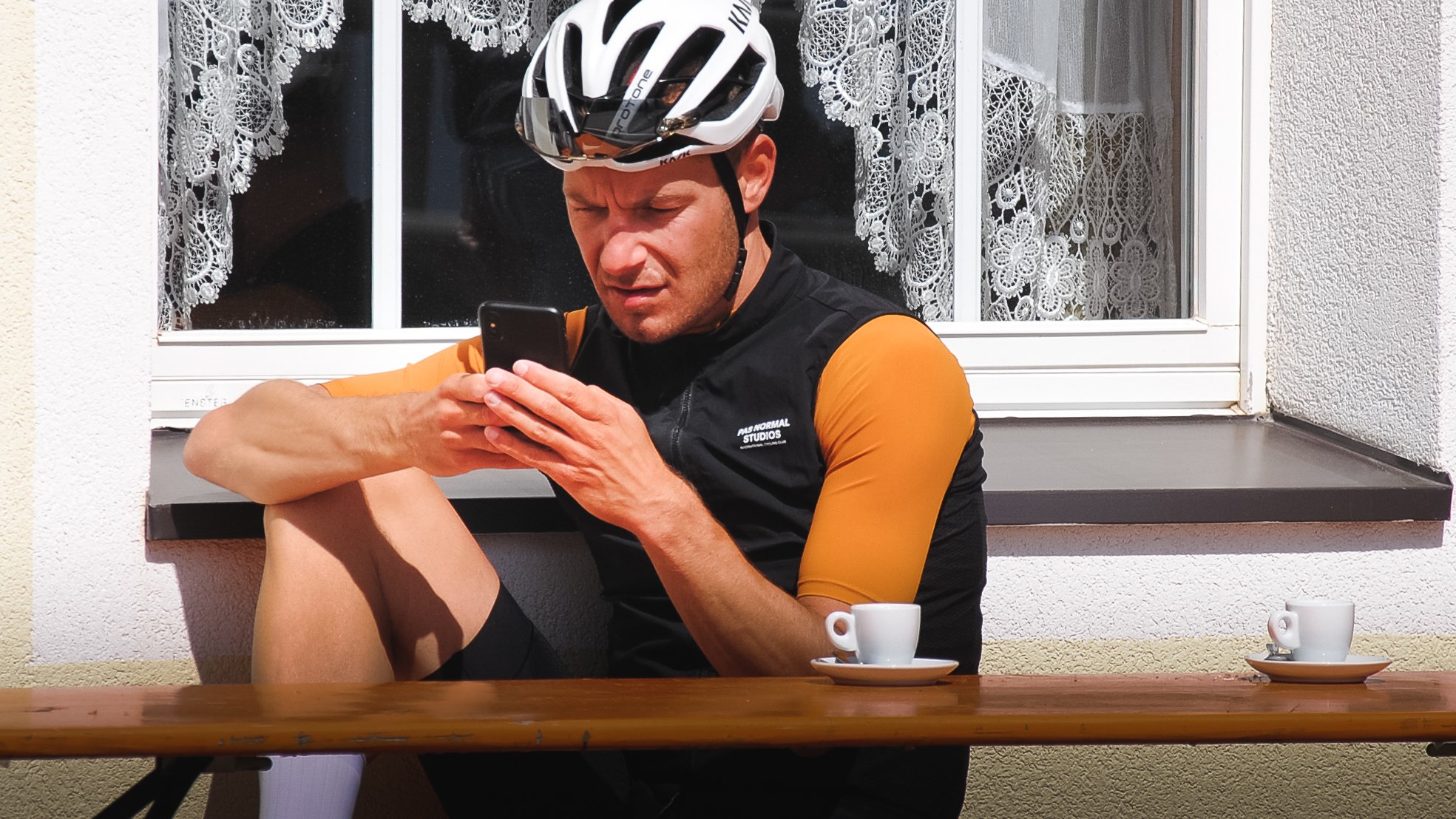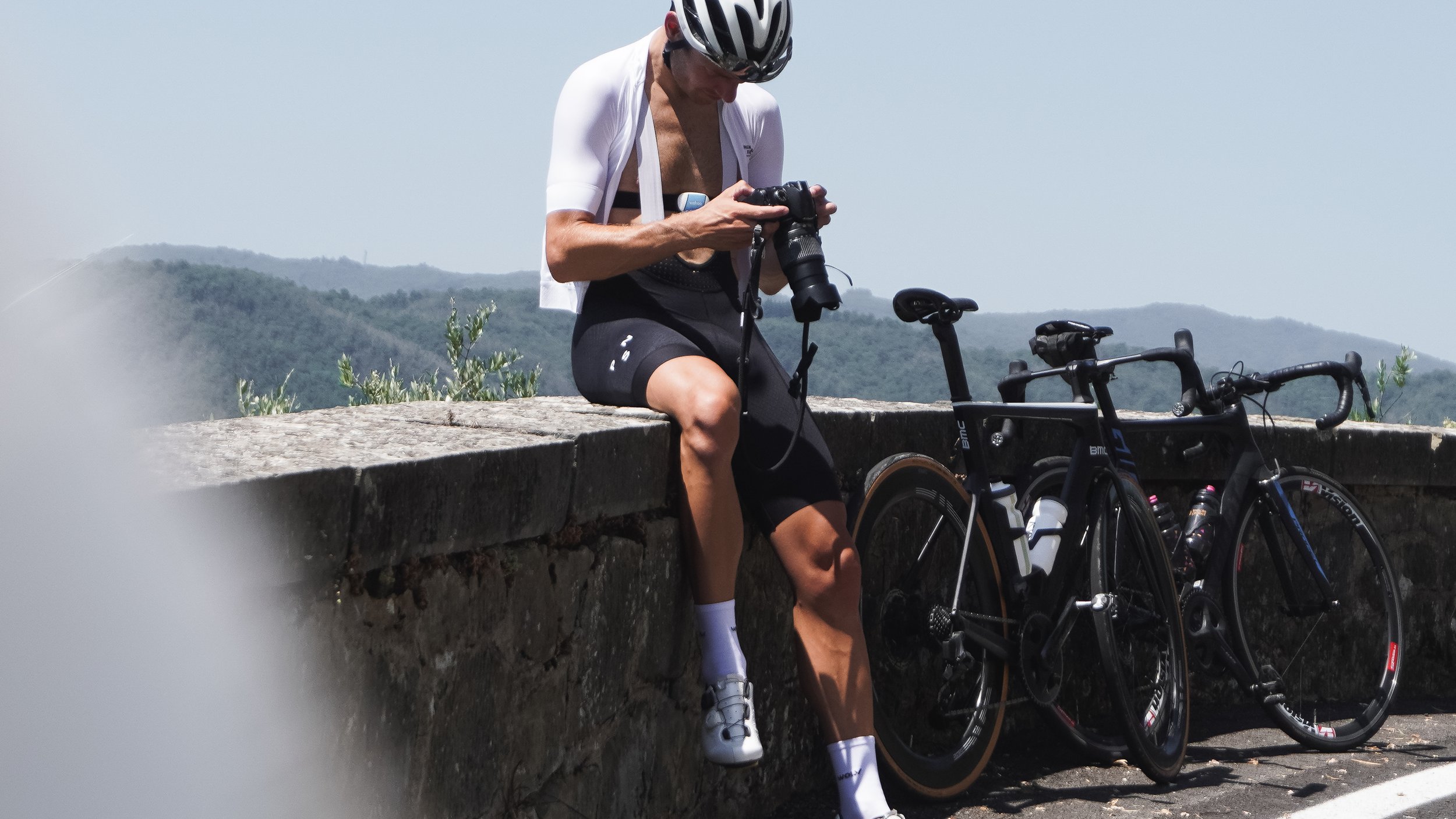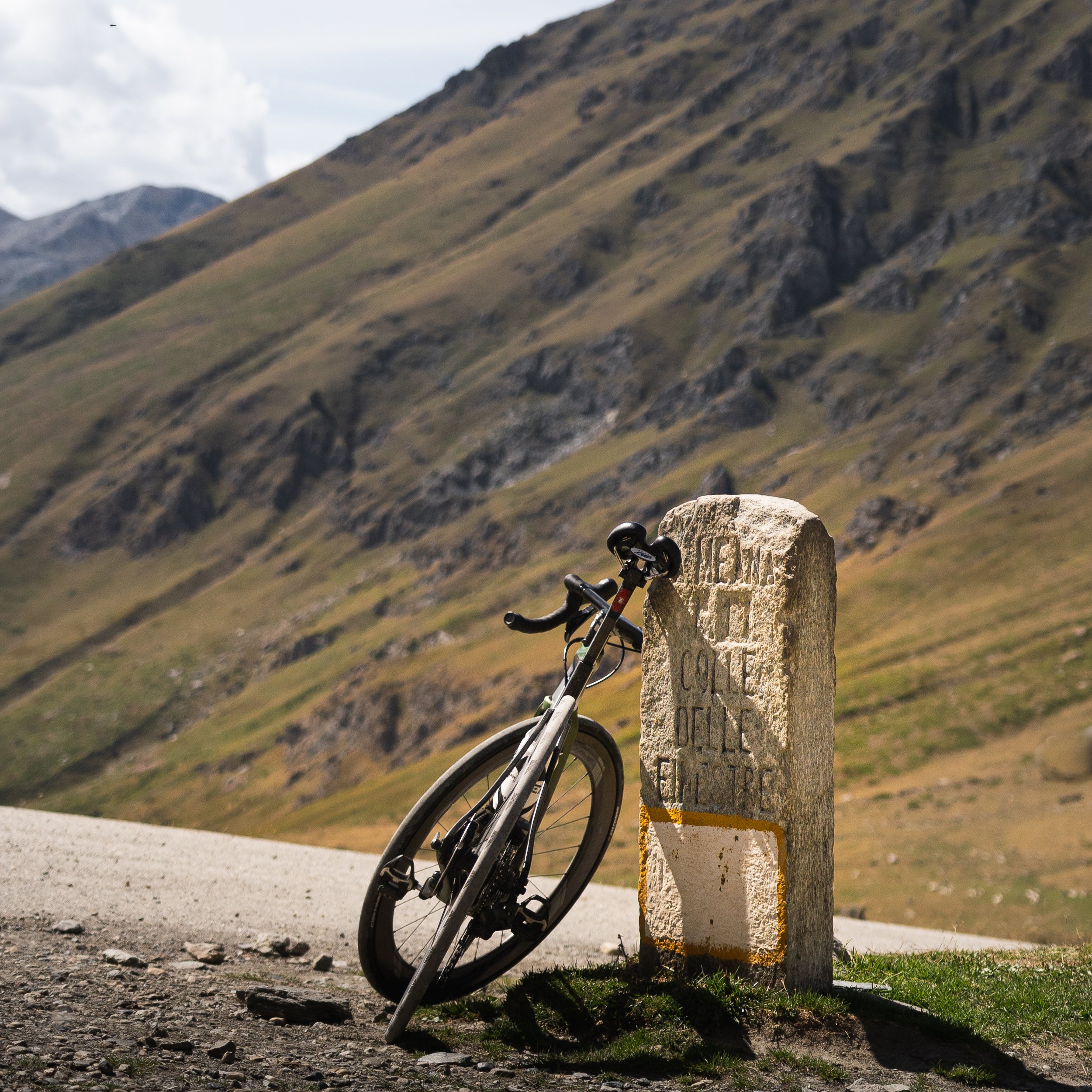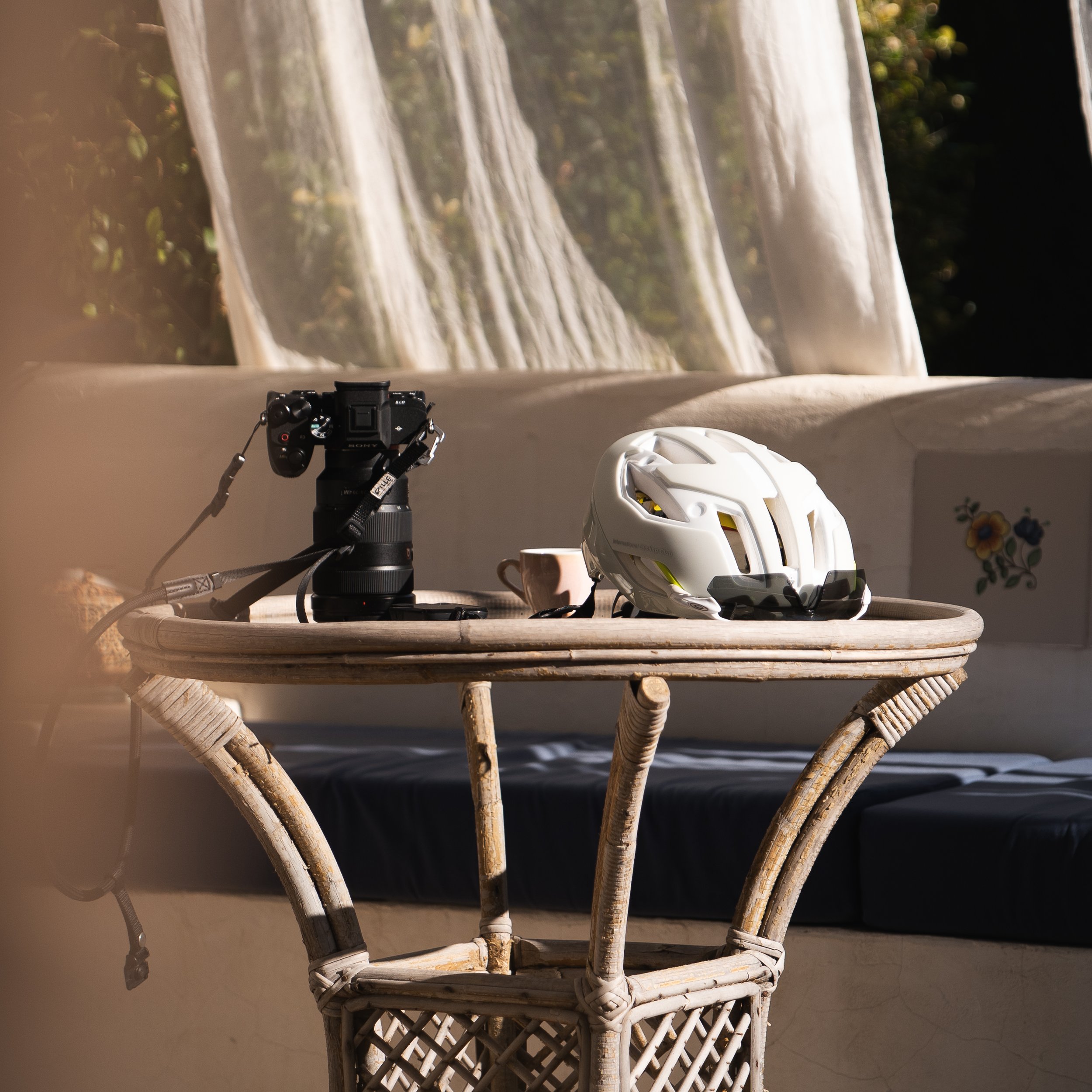Why I Am Using A Sony A7C For My Cycling Photography
So, I'm rocking a Sony A7C full-frame camera. Why, you ask? Well, it's all about the compact size, top-notch image quality thanks to its big sensor, and the fact that it weighs a mere 500 grams, making it the lightest full-frame camera on the market I think.
But there's more to my love affair with the A7C, and I'm about to spill the beans in this blog post! Are you itching to find out? Well then, keep reading...
a little bit of background
Before we dive into the nitty-gritty, let me give you a bit of background because, believe me, it adds something.
from iPhone to entry-level DSLR
When I took my first steps into Instagram, sharing snippets of my cycling adventures, I never felt the need to carry a camera around. Up until two years ago, I captured every shot using my trusty iPhone XS, and I was perfectly fine with that. Despite having some inkling that a camera would open up a world of possibilities, I stubbornly brushed off the idea. You see, I considered lugging a camera on my rides a hassle. But eventually, I found myself pushing the limits of what my iPhone could achieve. I yearned for crisper focus, greater depth, and all that jazz.
Then, my brother uncovered this Nikon D3000 entry-level DSLR camera for me. He had it lying around, unused and gathering dust. With its 18-105 mm zoom lens and an aperture of F3.5, the Nikon easily outshone my iPhone. I was over the moon about it. Admittedly, my knowledge about cameras was basically nothing, but I couldn't help but sing praises about the remarkable progress I made in terms of output. Over the course of two years, I delved into countless settings and options until I felt like I had pushed the D3000 to its very limits as well.
testing a Sony a7c
In the meantime, as I began to take myself more seriously as a photographer, I had the opportunity to borrow a Sony A7C for a trip to the French Alps and Provence. Through the network I had built, I connected with someone working at Sony and he was kind enough to lend me an A7C. When he saw the results I had achieved with my trusty Nikon, he was utterly astounded and offered me a little guidance on some initial settings to explore with the Sony.
Essentially, my technical starting point with the Sony was similar to where I had come with my Nikon. However, the outcome was shocking! In the most delightful way. The images that emerged were razor-sharp, with a sense of depth that I had never seen in my photography so far.
I had the privilege of playing with the A7C alongside the remarkable FE 24-70 mm f/2.8 GM lens for a month until I had to return it. You get that getting back to the Nikon was simply out of the question. I found myself hardly snapping any pictures during the fall season. Meanwhile, I did a bit of research to find a worthy follow-up to my Nikon. Although the A7C posed a significant investment, deep down inside, I had already made my choice…
kicking off with the sony a7c
Come January, decisions were made. The postman arrived with two packages. One contained my black Sony A7C, while the other concealed the Sony FE 24-70mm f/2.8 GM lens.
Without wasting any time, I delved right into using the set the very next day. I resumed where I had left off with the borrowed A7C, relishing in its capabilities. However, my appetite for technical exploration, experimenting with settings, and uncovering ways to elevate my photography was ignited.
After an evening spent watching tutorials and trying different configurations, I eagerly set out on a ride with my friend Ruben, intent on a full day of practising different types of shots.
As the days turned into weeks and then months, my familiarity with the A7C deepened gradually, empowering me to confidently share my adoration for this camera. Now, I’m thrilled to dive into the aspects of this camera that I like so much…
all about my Sony A7C
As I said initially, I think the A7C is setting itself apart as the pinnacle of compactness and lightweight design among its full-frame counterparts. At a mere 500 grams, I believe the A7C is the lightest full-frame camera you can find. That is of course great, but there is more.
Full-Frame Brilliance
With its generous full-frame image sensor, the Sony A7C delivers unrivalled image quality. The large sensor size allows for exceptional detail, remarkable low-light performance, and an impressive dynamic range, enabling me to capture shots in any lighting condition.
Autofocus Advancements
I found out that the Sony A7C provides exceptional autofocus capabilities. It’s fast and accurate at subject tracking, ensuring sharp and well-focused shots, even in challenging light conditions. Whether capturing fast-moving cyclists or achieving precise focus in various shooting scenarios, this camera’s autofocus performance is insane.
Intuitive Controls and Customization
Quality cycling photography demands quick and seamless operation, and I think the A7C delivers precisely that. I find the user interface friendly and intuitive at the controls. I can effortlessly navigate settings and make adjustments on the fly, ensuring I don’t have to miss a shot. Furthermore, I love the customizable buttons to tailor the shooting experience to my exact preferences, enhancing efficiency and enabling me to focus on capturing in various ways.
Weather Resistance
Yes, of course, I'm afraid of unpredictable weather conditions. Fortunately, they say that the A7C is equipped with robust weather sealing, providing reliable protection against moisture, dust, and harsh elements. This resilience gives me enough confidence to ride my bike with it, knowing that it can handle a bit of rain or shine.
However, I refrain from taking the camera with me in inclement weather or unfavourable forecast. If I do decide to take the risk, I always come prepared with a plastic bag and a pair of tie-wraps, allowing me to swiftly protect the camera from any unexpected downpours.
my preferred settings
I will probably delve deeper into this topic of preferred settings in a future blog post since there's still more to explore when it comes to the settings I use. However, I do like to mention that I'm particularly fond of the mode dial functionality on the A7C. This feature enables me to quickly access and shoot with three pre-defined settings that I have customized and saved in advance. This convenience allows for efficient and seamless transitions between shooting modes, ensuring I can capture the desired image with ease.
The memory recalls I use as follows.
portraits
This particular setting is a variation of the manual mode, offering me greater control over key parameters. Within this setting, I primarily utilize the following presets:
Aperture Wide: Setting the aperture to its widest possible value, maximizing the lens's light-gathering capabilities.
Shutter Speed Manual: Automatic mode allows me to adjust based on the scene's requirements in combination with ISO.
ISO Manual: Setting the ISO manually to tailor it precisely to the lighting conditions and desired level of image noise.
Focus Area: Employing a flexible small spot as the focus area, ensuring accurate and precise focus on my intended subject.
Metering Mode Highlight: Employing the highlight metering mode, allowing the camera to prioritize exposure for preserving highlight details, ensuring a well-balanced and properly exposed image.
These presets empower me to fine-tune my camera settings for optimal image capture, striking a balance between control and automation, and ultimately allowing me to create a nice portrait.
auto focus
This setting is a variant of the Shutter Priority mode, incorporating presets that I find most useful while riding fast and shooting randomly and often. Within this mode, I primarily rely on the following presets:
Aperture Auto: Setting the aperture to auto ensures a dynamic depth of field when I shoot around every now and then very randomly.
Shutter Speed Auto: The camera automatically adjusts the shutter speed to ensure proper exposure, considering the lighting conditions and movement within the frame.
ISO Auto: This setting enables the camera to adjust the ISO sensitivity dynamically, balancing the need for optimal exposure while minimizing noise in different lighting situations.
Focus Auto and Wide: By utilizing automatic focusing with a wide-area focus area, the camera can intelligently track and focus on subjects within the frame.
Metering Mode Multi: This mode utilizes multi-pattern metering, which evaluates the lighting conditions across the entire frame to determine the most accurate exposure settings.
By leveraging these presets, I can confidently rely on the camera's sophisticated automation to capture well-exposed and focused images in a variety of shooting scenarios while I also have to pay attention to the road.
shutter speed priority
This setting is a variation of the Manual mode, incorporating presets that I find ideal for capturing speed, whether on the bike or by the roadside. Within this mode, I primarily rely on the following presets:
Aperture Auto: Setting the aperture to auto ensures I only have to care about tracking the cyclists and nothing more than that.
Shutter Speed Manually: I manually adjust the shutter speed to control the amount of motion blur, depending on the desired effect. Usually, I go as low as I can manage and can easily adjust with the control dial.
ISO Manually: With this option, I can dynamically adjust the ISO sensitivity to maintain optimal exposure while minimizing noise in varying lighting conditions.
Focus Area Large Spot: I utilize a large spot focus area to capture the subject accurately, ensuring sharp focus while maintaining flexibility for composition.
Metering Mode: Highlight: This metering mode emphasizes the highlights in the scene, helping to prevent overexposure in bright areas and ensuring proper exposure overall.
By utilizing these presets, I can effectively capture the essence of speed and action, whether I'm in motion on my bike or capturing fast-moving subjects along the roadside.
the lenses I use
The A7C boasts a versatile lens ecosystem, granting me versatility and flexibility for the future. Currently, I rely on two distinct lenses for different purposes. Currently, I rely on two distinct lenses for different purposes.
Why I use the Sony FE 24-70 mm f/2.8 GM
My primary lens is the Sony FE 24-70 mm f/2.8 GM, which, despite its bulky size and 886 grams in weight, is my high-end option. I opt for this lens when I require a versatile focal range, allowing me to capture a wide variety of subjects and landscapes with excellent image quality and a fast aperture for impressive low-light performance.
Why I use the Sony E 35 mm f/1.8 OSS
On the other hand, I also make use of the lightweight and compact Sony E 35 mm f/1.8 OSS. This little one offers a very portable setup, weighing in at just 155 grams. Despite its limitations, such as the fixed focal length and the fact that it's not suitable for my full-framer, I have a soft spot for this lens as it consistently outperforms my iPhone. Although I may explore a full-frame alternative in the near future, for now, this lens does its job at a fair price point.
how I carry it around
Already for the Nikon, I discovered the Rille strap, providing a secure three-point fixation system.
Further exploring I came across Fernwee, who also utilized the Rille strap but paired it with a sturdy, round mountaineering shoulder strap. I tell you. Look no further. This combination is golden.
Installation is something straightforward. Just take a few rides to find the perfect length adjustment.
Fernwee offers this comprehensive package in his webshop for €69. And if you're curious to learn more about this strap, feel free to check out my dedicated blog post on the topic.

